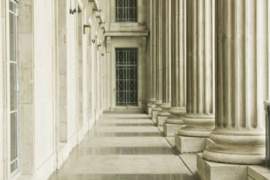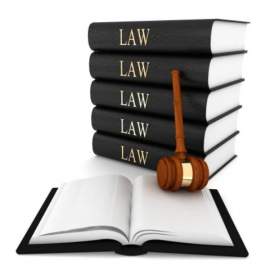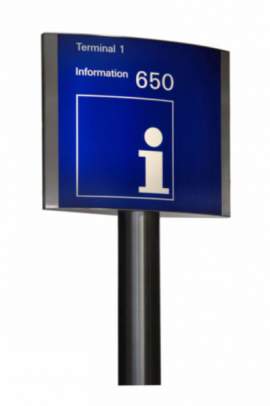
Ruth Bader Ginsburg

Popular In Supreme Court
How Many Supreme Court Justices Are There Justice Clarence Thomas Landmark Supreme Court Cases Supreme Court Building Us Supreme Court Docket Chief Justice John Roberts Hugo Black Justice Antonin Scalia Roger B Taney Supreme Court Justices Justice Elena Kagan Justice Sonia Sotomayor
Supreme Court Justice: Ruth Bader Ginsburg
Ruth Bader Ginsburg is a current Associate Justice of the United States Supreme Court. Ruth Bader Ginsburg was appointed to office by President Bill Clinton and then took the oath of office on August 10, 1993. Ginsberg is the 2nd female justice to date as well as the first female Jewish justice.
Early Life
Ruth Bader Ginsburg was born in Brooklyn, New York. She attended James Madison High School and then went on to Cornell University, where she graduated in June 1954 with a Bachelor of Arts in Government. She continued on to Harvard Law School, but later transferred to Columbia Law school where she graduated and tied for first in her class in 1959. To this day, she has also received an honorary Doctor of Laws degree from Harvard University, Princeton University, and Willamette University.
Early Judicial Career
Ruth Bader Ginsburg’s judicial career began after President Jimmy Carter appointed her on April 14, 1980 to the District of Columbia Circuit of the United States Court of Appeals. Ginsburg served the office for thirteen years, until her appointment to the Supreme Court. During her tenure on the District of Columbia Circuit, she made 57 hires for intern, secretary, and law clerk positions. It was revealed at her Supreme Court confirmation hearing that none of those 57 positions were filled by African-Americans, which she was heavily criticized for.
Supreme Court Career
Ruth Bader Ginsburg was nominated by President Bill Clinton as a Supreme Court Associate Justice on June 14, 1993, in order to fill the position emptied by Justice Byron White’s retirement. During Ginsburg’s subsequent testimony before the United States Senate Judiciary Committee for her confirmation hearings, Ruth refused to answer any questions about her personal views on many issues or how she would arbitrate certain theoretical circumstances as a justice. Many Senators on the committee were very frustrated due to these unanswered questions about how Ginsburg would transition from being an advocate for causes she held dear, to acting as a justice. Despite this, Ginsburg did not discuss her beliefs regarding the proper role and limits of jurisprudence, stating that doing so would be acting injudiciously.Meanwhile, Ruth Bader Ginsburg did actually answer questions brought up regarding some potentially controversial issues, such as affirming her belief in a right to privacy and her personal judicial belief and thoughts on gender equality. She was confirmed by the U.S. Senate by a 96-to-3 vote and was sworn in on August 10, 1993.
Famous Cases
United States v. Virginia (1996): A case where the Supreme Court struck down the long-standing male-only admission policy at Virginia Military Institute in a 7-1 decision. Justice Ruth Bader Ginsburg wrote for the majority and stated that since Virginia Military Institute failed to show an exceedingly persuasive justification for the sex-biased admissions policy, the policy violated the equal protection clause of the fourteenth amendment. In order to satisfy the equal protection requirement, Virginia state had proposed a parallel and equal program for women, called the Virginia Women's Institute for Leadership. However, Justice Ruth Bader Ginsburg stated that the women’s program would not provide women with the equal rigorous military training, courses, facilities, financial opportunities, faculty, or connections and alumni reputation that the male cadets received.
Olmstead v. L.C. (1999): A Supreme Court case that dealt with discrimination against individuals with mental disabilities. The Supreme Court, including Justice Ginsburg, felt that because of the Americans with Disabilities Act, people who had mental disabilities have the right to choose to live in the community instead of institutions if the State's treatment professionals feel that community placement is appropriate for the individual, the individual wishes to be transferred from an institution to a community setting, and the community placement can be accommodated reasonably.
Friends of the Earth, Inc. v. Laidlaw Environmental Services, Inc., (2000): A Supreme Court case that discussed the law regarding the standing to sue and mootness. The Supreme Court held that the plaintiff, the residents of South Carolina's North Tyger River, did have a standing to sue an industrial polluter, who had many deterrent civil penalties placed on them.
The justification was based on the fact that these residents would have used the North Tyger River for recreational purposes, but because of the pollution, they were unable to do so. The Supreme Court ruled in favor of Friends and stated that plaintiffs did not have to prove a particular harm to residents. Justice Ruth Bader Ginsburg wrote that the injury to the plaintiff was from lessening the recreational and aesthetic values of the local area due to the plaintiff’s knowledge of the repeated violations of Laidlaw’s clean water permit.
Bush v. Gore (2000): A landmark Supreme Court decision on December 12, 2000, that resolved the controversy of the 2000 presidential election in favor of George W. Bush. Eight days before, the U.S. Supreme Court had decided unanimously the related case of Bush v. Palm Beach County Canvassing Board (2000) and three days before that, had preliminarily stopped the recount that was happening in Florida. The Court ruled in a per curiam decision that the Florida Supreme Court's technique for the ballot recount violated the Fourteenth Amendment’s Equal Protection Clause.
The Supreme Court also ruled that no other method could be made within the time limits that were created by Florida State. Three concurring justices also felt that the Supreme Court of Florida State had violated Article II Section 1 of the Constitution, by incorrectly interpreting the Florida election law that had been established by the Florida Legislature. The Supreme Court decision allowed George W. Bush to remain as the winner of the 25 electoral votes from Florida. Justice Ruth Bader Ginsburg dissented in this case.
Stenberg v. Carhart (2000): A Supreme Court case that looked at a Nebraska law that illegalized partial-birth abortion, except when it would save the mother’s life. The Supreme Court struck down the law, and found that it violated the Fourteenth Amendment’s Due Process Clause as interpreted in Roe v. Wade and Planned Parenthood v. Casey. Justice Ruth Bader Ginsburg joined the majority opinion of Justice Stephen Breyer, who cited Planned Parenthood v. Casey and stated that any abortion law which imposed the undue burden on the right to choose should be considered unconstitutional. Justice Ruth Bader Ginsburg agreed on the unconstitutionality of the law, but she also wrote a separate opinion where she plainly stated that a state did not have the power to force physicians to use medical procedures other than those that they felt were the safest in their own judgment. She added on that this was a part of the life and liberty which was protected under the United States Constitution.
Lawrence v. Texas (2003): A landmark Supreme Court case that struck down a sodomy law in Texas by a 6-3 ruling. In the previous case Bowers v. Hardwick (1986), the court had upheld a Georgia statute and claimed that there was no protection of sexual privacy in the constitution. The new ruling held that the previous case looked at liberty interest too narrowly. The majority decision, which included Justice Ruth Bader Ginsburg, stated that intimate consensual sexual conduct was protected by the Fourteenth Amendment’s Due Process Clause. The decision invalidated similar laws in the country that criminalized sodomy between consenting heterosexual and homosexual adults in private.
Grutter v. Bollinger (2003): A Supreme Court case where the court upheld the affirmative action admissions policy set by the University of Michigan Law School in a 5-4 decision. Justice Ruth Bader Ginsburg was a part of the Court's majority ruling, which was written by Justice Sandra Day O'Connor. The majority opinion stated that the U.S. Constitution did not explicitly prohibit the school's narrowly tailored use of race to promote a compelling interest in attaining the educational benefits that occur from having a diverse student population. The Supreme Court felt that the law school's desire to achieve a critical mass of minority students did qualify as a tailored use. The majority opinion also suggested that in future cases, racial affirmative action should no longer be necessary and therefore no longer be allowed. This decision mostly upheld the position in the case University of California v. Bakke, where Justice Powell allowed race to be a factor in admissions policy, although quotas were illegal.Gonzales v. Raich (2005): A decision made by the U.S. Supreme Court which ruled that the United States Congress could criminalize the use and production of home-grown cannabis even in states which had laws that approved its use for medicinal purposes. Congress could do this with the power given to them from the Commerce Clause of the U.S. Constitution. The beginning of the Court's majority opinion, in which Justice Ruth Bader Ginsburg was included, concluded that Congress did in fact have the power to ban or control marijuana for non-medical uses. Banning marijuana growth for the purpose of medical use was considered a reasonable way of limiting or preventing access to marijuana to the public for other uses. The court acknowledged the existence of an illicit marijuana market and brought up the concern that allowing its growth would have a significant effect on supply and demand of that commodity in the national market.
Gonzales v. Carhart (2007): A Supreme Court case that upheld the 2003 Partial-Birth Abortion Ban Act. The case reached the Supreme Court after Alberto Gonzales, the U.S. Attorney General, appealed a ruling of in favor of LeRoy Carhart by the U.S. Court of Appeals for the Eighth Circuit that went against the Partial-Birth Abortion Ban Act. The decision by the Supreme Court upheld Congress's ban and stated that the act did not impose any sort of undue burden on a woman’s due process right to get an abortion. This case was broadly interpreted as showing a shift in Supreme Court jurisprudence toward more restrictive abortion rights, partly due to Sandra Day O'Connor’s retirement and Samuel Alito acting as her replacement. Justice Ruth Bader Ginsburg was a part of the dissent in this case, stating that it was alarming that the previous Supreme Court abortion precedent from Planned Parenthood v. Casey was being ignored. Furthermore, she was concerned with the lack of a health exception and criticized the fact that legislators were making medical decision and minimizing the judgments of trained doctors.
Citizens United v. Federal Election Commission (2010): A landmark 5–4 decision by the Supreme Court which held that First Amendment of the Constitution prohibits the government from censoring any political broadcasts in candidate elections even if those broadcasts are funded entirely by corporations or unions. This Supreme court decision originated in an argument regarding whether Citizens United, a non-profit corporation, had the right to air a film which was critical of Hillary Clinton as well as whether the corporation could advertise the film as a broadcast ad which would feature Hillary Clinton's image, which was an apparent violation of the Bipartisan Campaign Reform Act of 2002.
The case reached the Supreme Court from a 2008 case which was appealed from the District of Columbia District Court. The district court’s decision had allowed the provisions of the Bipartisan Campaign Reform act of 2002, which prevented the featuring Hillary Clinton from being televised within 30 days of Democratic primaries of 2008.The United States Supreme Court reversed the decision of the lower court, striking down the provisions of 2008 act that barred all corporations, including not-for-profit and for-profit corporations as well as and unions from broadcasting any electioneering communications such as a cable, satellite, or broadcast communication which mentioned a candidate in a 60 day period before a general election or 30 days before a primary.
Justice Ruth Bader Ginsburg joined the majority opinion, which found that the prohibition of all independent expenditures made by unions and corporations was invalid and thus was not applicable to spending such as that in movie. Furthermore, since there was no way to tell apart the media and other corporations, the restrictions could allow Congress to potentially suppress political speech found in books, television, blogs, or newspapers.
Justice Ruth Bader Ginsburg also joined a dissenting opinion written by Justice Stevens which dissented from the principal holding found in the majority opinion. It argued that the Court's ruling could potentially compromise the integrity of elected institutions in the United States and would damage the institutions. The dissent effectively explained that the opinion of the court would undermine the common sense of Americans who acknowledge a need to stop corporations from undermining the government.
NEXT: A Short Biography on Justice Salmon P. Chase





















